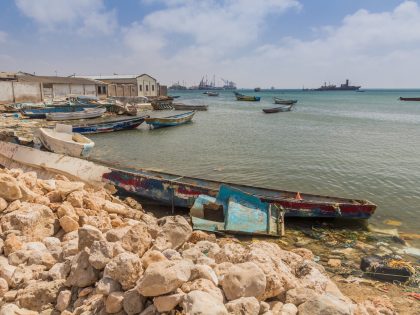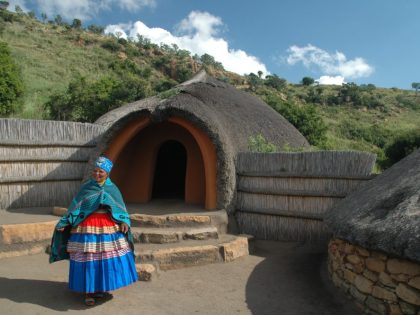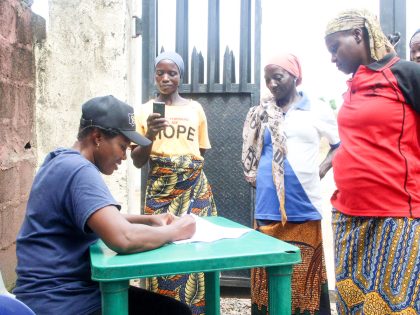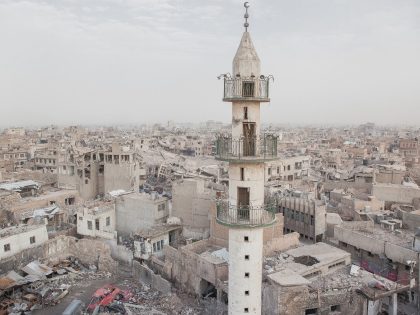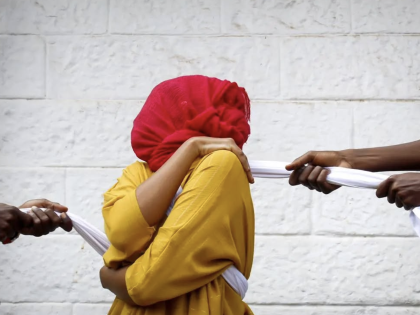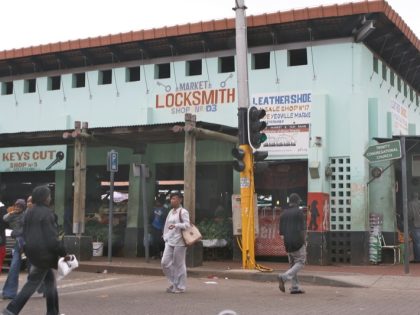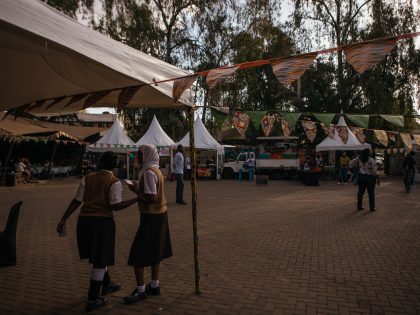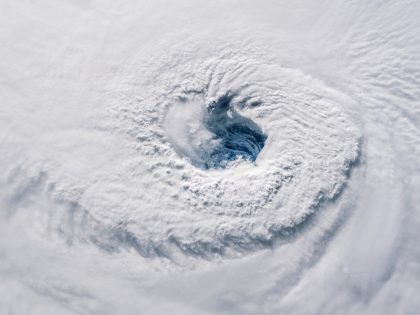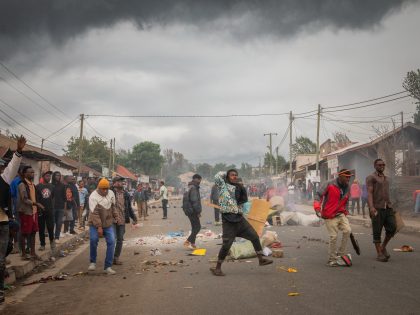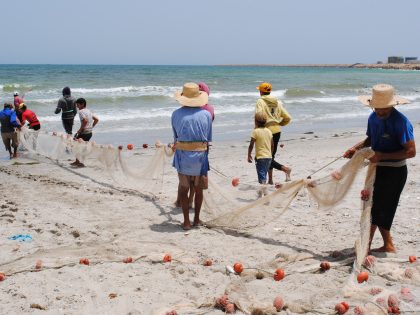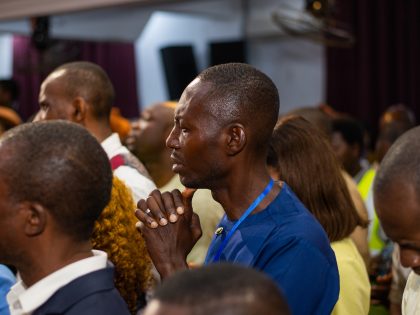The Border Crossing
The unwelcome atmosphere for refugees from Africa in the United States, result in some of them risking their lives to get to neighboring Canada.

Hamish (Flickr CC).
A young woman, hugging her 18-month-old child to her chest, is dropped off in freezing temperatures in a remote area outside of Toronto, Canada, in early December. She has crossed the border from the United States with her three children, fearing that she will be deported in the wake of recent changes to US policy under the administration of US President Donald Trump.
Hidden in the back of a truck, she and her children are asked to get out at a checkpoint in the Greater Toronto Area, and wait for someone else to arrive to help them to their final destination. She waits in the biting cold for another three hours, keeping her children pressed close to her, and trying to shield their faces from the wind with her ungloved hands.
The mother and her children end up at the Canadian Centre for Refugee and Immigrant Healthcare (CCHRIC), a volunteer-run clinic headed by Dr. Paul Caulford, a family physician based in Scarborough, a sprawling suburb in the east end of Toronto. The whole family is suffering from frostbite, with the most severe case on the hands of the mother. Her fingers are so swollen that the doctor on duty traces them on the chart, because he can’t adequately describe for the medical record how disfigured they are. Caulford decides that the woman needs urgent hand care and plastic surgery and arranges for her to go into the hospital the following day. She is reluctant to go, because she doesn’t want to leave her children, so she opts for the volunteer physiotherapy sessions, which will gradually improve her range of motion and reduce her pain.
Sumathy Rahunathan, the Clinic Coordinator at CCRIHC, says that she has never seen anything like this in her years working in public health. “I was the first person to talk to her,” Rahunathan explains. She asked the woman to write out her name, but she said she could not move her hand, exposing the blistered and peeling fingers to the clinic staff..
“This woman has four children, all under the age of nine, who she protected during this journey. She came to Canada with only the clothes on her back and this is what happened. You hear and see a lot of things here, but I was shocked. That level of neglect, leaving someone out in the cold to freeze, it doesn’t make sense.”
This is but one of many stories of border crossings into Canada that the CCRIHC has encountered. The first case was in early autumn 2016, when an immigrant family from Florida sought asylum in Canada. The family left the US after receiving death threats for putting Bernie Sanders signs on their lawn and threats of physical abuse towards their handicapped daughter. Since then, the numbers have been increasing at an alarming rate. All of the patients in care at the CCRIHC are from sub-Saharan Africa, with a majority of the refugees claimants coming to Canada from New York state.
“They’re afraid,” Caulford explains. He says many of the patients are traumatized from their journey on top of having lived in very insecure conditions in the US. “This one [pregnant] woman had received no antenatal care up until this point, and she was afraid to deliver in the States, for fear of being reported. It was clear to us, from what she said, that things weren’t pleasant wherever she was before. The vitriol and hate rhetoric that has bombarded refugees in recent months forced her choice to leave.”
Indeed, according to Caulford, many of the people seen at CCRIHC arrive in Canada because they no longer feel welcome as immigrants or refugees in the US and have been told that they face significant risks if they stay. They travel in the backs of unheated and unlit cargo trucks that smuggle them across the border and drop them at often remote locations in inclement weather, with no back-up in sight.
“People are crossing from the United States of America into Canada for safety,” Dr. Caulford says. “If somebody had said that to me a year or two ago, I would’ve said that they are out of their mind. How fast things change.”
In January 2017, there were approximately 810 men, women and children seeking refugee status in Toronto, according to Patricia Anderson, manager of the city of Toronto’s Homelessness Services . This is an 80 percent increase from last year. Reports from Anderson’s front-line staff indicate that some of the refugees arriving here first intended to seek refugee status in the United States.
“Toronto is a sanctuary city, which means it is not mandatory for refugees to provide information about immigration status in order to receive some city services, including shelter,” explains Anderson. She says the city has seen an increase in the percentage of shelter intakes of people seeking refugee status in Canada. In 2014, 2.1 percent of intakes were refugees, and in 2016, that jumped to 7.2 percent.
To prepare for a potential flood of refugees from the US, the CCRIH set up a hotline to field calls from shelters in hopes that refugees would seek treatment early.
“We are really concerned that people aren’t going to be stepping forward when crossing the border,” Caulford says. “All of the patients we have seen have delayed access to healthcare. They are crossing the border, suffering these weather-induced injuries, keeping quiet and trying to find a shelter, and then eventually when the pain becomes too unbearable, they seek medical attention. In one of the shelters, a woman was living in a single room with her children when the staff realized she was only using one of her hands and hiding the other. When they asked to see it, they realized that it was hanging limp at her side. The shelter staff rushed her to the emergency department, where they began therapy to try to save her fingers and hand from amputation.”
The damage to the fingers from severe frostbite results in tissue injury and tissue death, pain, disfigurement, and discoloration. Of the cases Caulford has seen, 50% involved severe frostbite to the hands and feet. Over half of these cases were children, who are at high risk of amputation if their injuries are not attended to promptly. In most cases, he explains, people do not understand what has happened to their bodies. Many of these people have never experienced winter, much less an icy Canadian version. They are ill prepared for the conditions, with usually only light clothing and no gloves or hats or adequate footwear.
“At the beginning of January, we realized that this was happening in other provinces besides Ontario, and it made us think, ‘Who else is out there?’” Caulford says. He began calling doctors at other refugee care organizations, as well as regional and local health authorities urging them to put out warnings along the borders.
“It became a humanitarian response. It’s grotesque to think about these people being dropped off in temperatures where skin freezes in minutes.”
The Ontario Council of Agencies Serving Immigrants (OCASI) provides services to immigrants and refugees, and has been raising awareness about the plight of asylum seekers crossing into Canada.
“Given the recent news of immigration sweeps in communities across America, we should not be surprised that individuals from communities that are being demonized are trying to find safety and asylum in Canada, which has a rhetoric of welcoming refugees and immigrants,” says Debbie Douglas, the organization’s Executive Director.
“Those risking their health to [cross unchecked at border points] in this winter weather are doing so because they are aware of the Third Safe Country Agreement that exists between Canada and the USA,” explains Douglas. “The agreement states that those seeking asylum must make a claim in the country of landing. Thus, those crossing the border can be technically returned to US immigration and customs if they show up at a Canadian immigration and customs checkpoint to make a claim. There are exemptions to this rule, however, people are hesitant to test this.” At this time, OCASI is focused on having the federal government suspend the Safe Third Country Agreement.
To date, the Liberal government’s Minister of Immigration, Refugees and Citizenship, Ahmed Hussen, has resisted calls for a suspension or repeal of the agreement, which would allow those fleeing the US to arrive at an official border crossing and make a claim without fear of being turned back.
The concern continues to be the safety of the crossing in extreme weather, as well as risks of being smuggled in trucks and vans.
“Our sense is that men and women with their children are taking the risk to reaching Canada due to the Trump regime and its anti-refugee, anti-Muslim rhetoric,” Douglas says. “Those in need of protection do not believe that they will receive a fair hearing in the United States.”
Douglas says that while OCASI and Toronto are seeing an increased number of cases, the vast majority of people are crossing into the province of Manitoba, at Emerson, near the border with North Dakota. Recently, two men from Ghana crossed border in the middle of a snow storm. The pair walked for seven hours in sub-zero temperatures and were only spared freezing to death by a passing truck, whose driver took them to a nearby hospital.
Rita Chahal, the executive director of the Manitoba Interfaith Immigration Council, says that in past years the refugee center in Winnipeg received on average 60 asylum seekers. In the last three months alone, there have been 80 such cases.
“We are definitely, definitely, seeing an increase in numbers.” Chahal says that the majority of refugees are coming from Minneapolis or North Dakota. Many are originally from Somalia, Ghana, Eritrea and Djibouti. Refugees may arrive at the border at Emerson and make an asylum claim, then Chahal or one of her co-workers will drive to pick them up. In other instances, people will find their way to Winnipeg, search for shelter, and then come to file their claim and submit requests for work permits with the help of the refugee center.
“At the end of the day,” says Chahal. “When somebody fears for their life, and has some hope at the end, that in itself is worth a life.”
